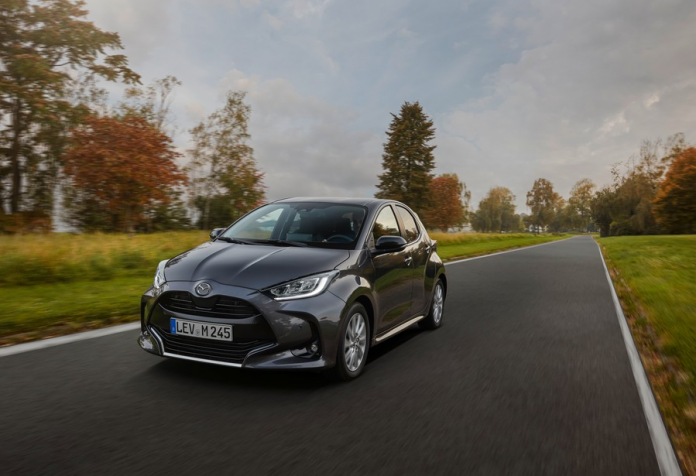Mazda has officially launched its first model equipped with a Full Hybrid powertrain. This is the Mazda2 Hybrid that will arrive in Europe in the spring of 2022. Prices for the Italian market have not yet been communicated. This new car is the result of a collaboration agreement between Toyota and Mazda. As you can clearly see, the new car is born on the basis of the Yaris hybrid.
This is an operation already seen, for example, between Toyota and Suzuki with the debut of the Across Plug-in and the Swace Hybrid. The launch of the new Mazda2 Hybrid was long overdue and it was already known that it would be based on the Yaris. Past spy photos had, in fact, allowed to discover precisely this detail.
SPECIFICATIONS WITHOUT SURPRISES
The design has no obvious differences with that of the Toyota model. Different logo aside, there don’t seem to be any other big changes. The interior is also basically the same as the Yaris. The technical specifications, of course, are the well-known ones we already know.
Thus, the new Mazda2 Hybrid will have the powertrain of the Yaris hybrid capable of delivering 85 kW (116 hp). The top speed reaches 175 km/h, while accelerating from 0 to 100 km/h takes 9.7 seconds. The new car consumes 4.0-3.8 l/100 km and puts 93-87 g/km of CO2 (16 or 15-inch wheels). These values are according to the WLTP cycle. Once on the market, the new hybrid will be offered in mazda2 Hybrid Pure, Mazda2 Hybrid Agile and Mazda2 Hybrid Select trim levels.
And the current Mazda2? It will not be eliminated, at least for the time being. This model, in fact, has recently been updated to the 2022 model year and therefore will continue to be marketed. The new Full Hybrid car is important for the manufacturer in the context of its commitment to achieving the goals set out in the “Sustainable Zoom-Zoom 2030”, its long-term vision for technological development.
The brand, in line with the Paris Agreement, aims to reduce average “well-to-wheel” CO2 emissions by 50% (from oil extraction to road use) by 2030 and, by accelerating the electrification of its fleet, achieve carbon neutrality by 2050.
































